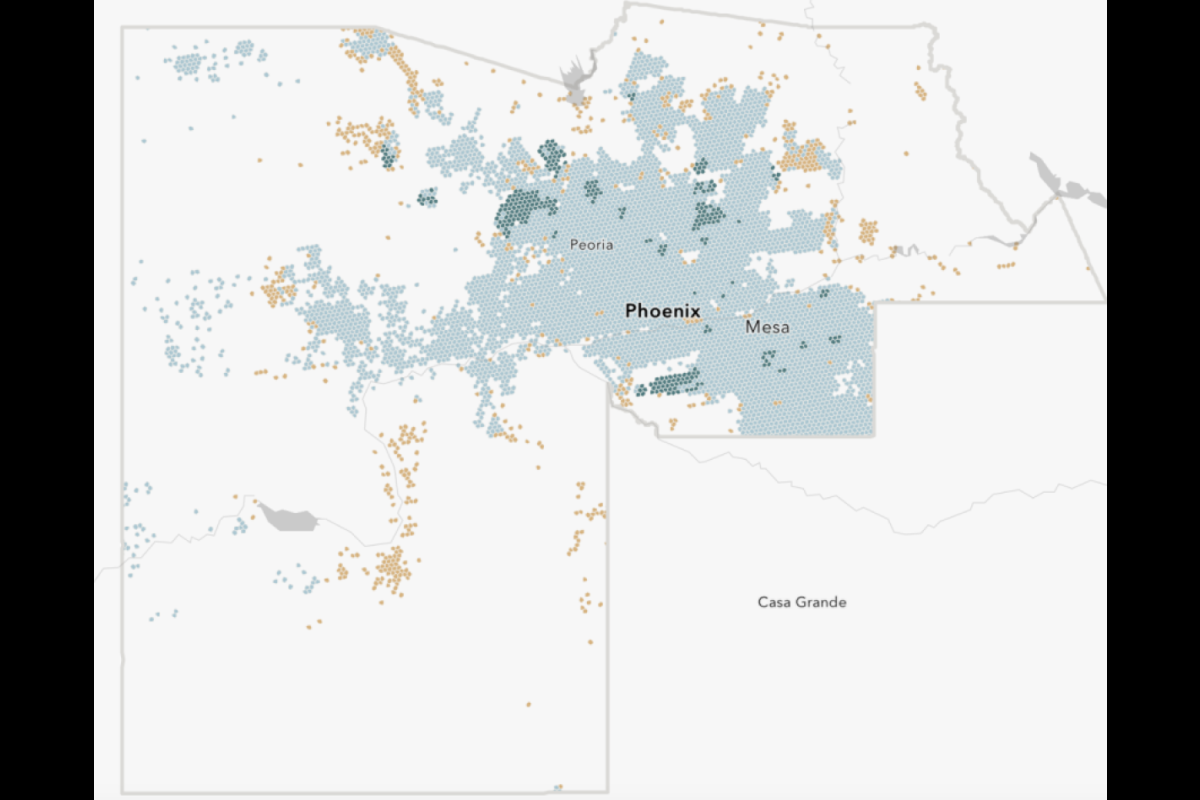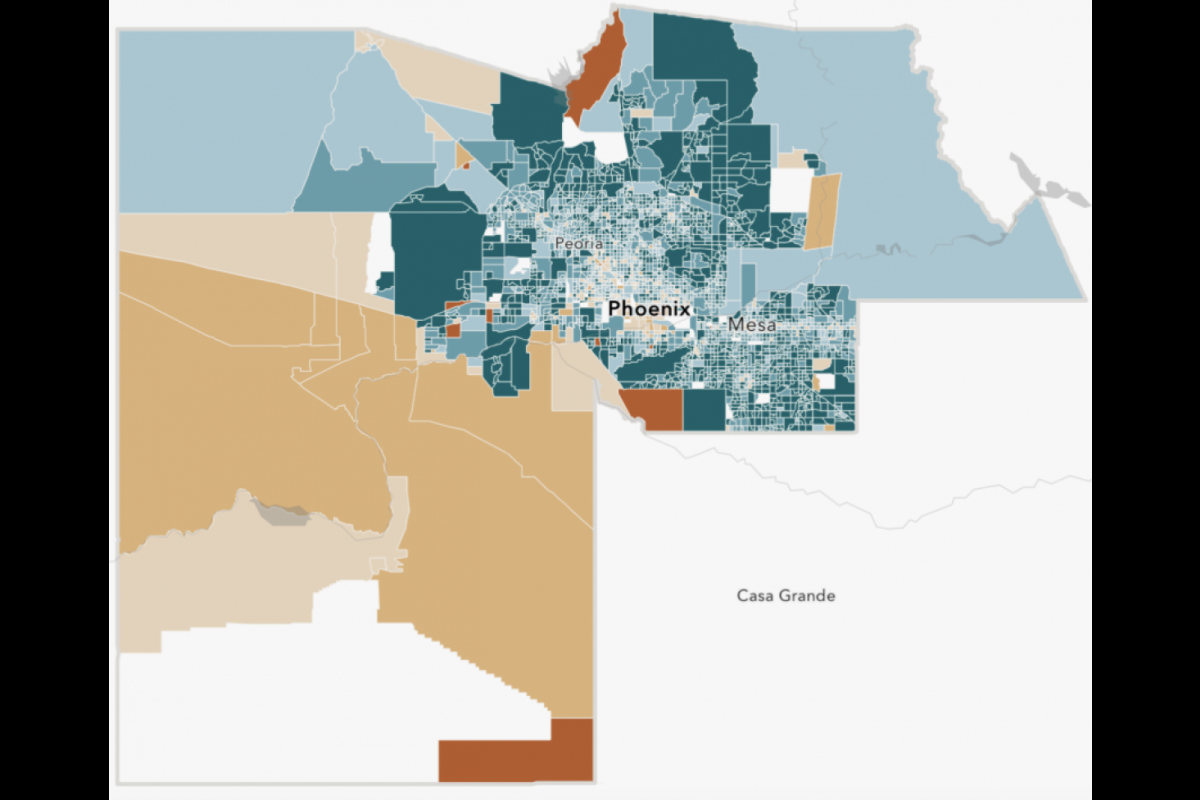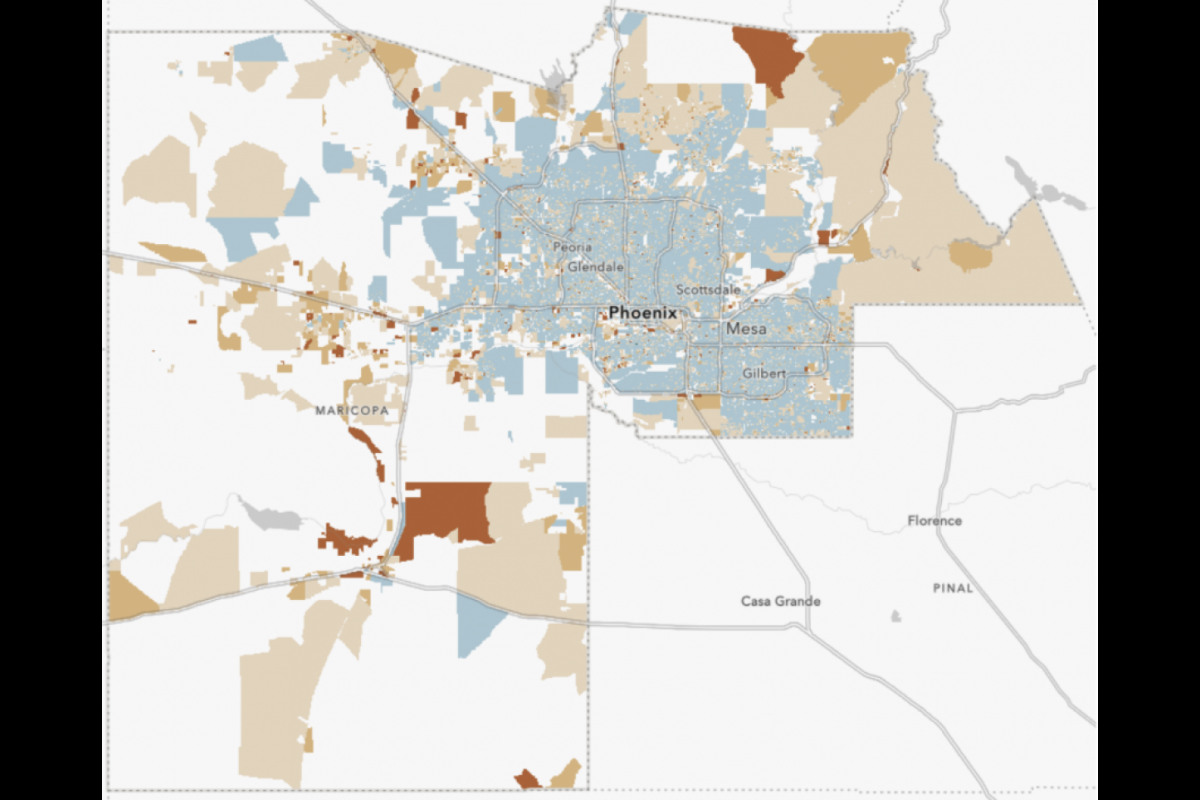In our rapidly evolving digital era, access to the internet has become essential for staying connected to opportunities in work, learning and telehealth services.
Yet, reliable high-speed broadband access varies across Arizona. To address this growing disparity, Arizona State University is taking concrete steps to help Maricopa County communities get connected — and stay connected.
This month, ASU’s Enterprise Technology, alongside a network of collaborators across the state, launched AZ-1 — a repository of resources on broadband expansion, digital equity and inclusion efforts. AZ-1 (pronounced “as one”) symbolizes the coalition of Arizona changemaking organizations invested in enacting and sharing about large-scale change.
“By providing the resources communities need to get and stay connected, we’re shaping a future where everyone has the access needed to thrive, regardless of ZIP code,” said Lev Gonick, chief information officer at ASU. “It takes strategic collaboration to make a meaningful and sustainable impact, and AZ-1 has tapped the expertise of innovative and values-driven organizations across the state.”
One seminal resource created by the network is Maricopa County’s Broadband Map, which highlights areas most in need of broadband access.
The genesis of the mapping effort
In fall 2022, the Maricopa County Board of Supervisors voted to provide ASU and its collaborators $34.6 million to advance broadband, community support, equipment and training across Maricopa County through 2026 — one of the largest university-led digital equity initiatives in the nation.
This collective work became known as the Maricopa County Broadband Initiative. As part of the grant, ASU launched the broadband mapping project, seeking to visually represent broadband connectivity across Maricopa County to help inform city and community planning.
The maps combine multiple data sources to better tell the complexity of broadband connectivity and access.
The internet connectivity layers include fixed broadband and mobile availability data reported by the Federal Communications Commission (FCC), types of computers and internet subscriptions reported by the American Community Survey (ACS), and aggregated download and upload speed tests reported by Ookla. Meanwhile, the demographic layers include unincorporated areas, residential zoning, population, education, income, persistent poverty, and tribal lands.
Combined, these data sources provide a much more detailed picture of access and availability.
The AZ-1 team meets to review broadband maps. Photo by Mike Sanchez/ASU Technology
Multi-layered maps for a multifaceted view
The maps are meticulously designed, layering multiple data sources to achieve a comprehensive view of broadband access in the county. Kelly Mukherjee, director of technical program management for broadband and digital inclusion at ASU, and the mapping team set out to better understand broadband access.
One example included better understanding the intersection between persistent poverty and low broadband subscription rates. This revealed critical insights about areas where economic challenges might compound with digital exclusion.
“Collaborators, including Sun Corridor Network and the Digital Equity Institute, are leveraging them to strategize the expansion of broadband infrastructure and cultivate partnerships with community pillars, including libraries, educational institutions and food distribution centers,” Mukherjee said.
Mukherjee noted that addressing the needs of underserved communities is complex. Because the term “underserved” encompasses a broad spectrum, it doesn’t have a single definition when it comes to digital access. It can refer to a range of situations — from areas with no internet connectivity at all to regions with slow or unreliable connections, or places where broadband might be available but not affordable to most residents.
To ensure internet access accurately aligns with community needs, the map also reflects crowd-sourced speed test data from community members using the Ookla speed test. As more participants test speeds within their households, AZ-1 will continue to capture the authentic state of connectivity.
Given this multifaceted notion of underserved communities, each layer of the broadband map provides specific insights about an area. Depending on the data sources and layers used, the maps highlight different aspects of digital exclusion.
The mapping team includes the geographic information system expertise of Ciera Parkhurst, a recent graduate of ASU with deep ties to Maricopa County.
“A combination of relevant datasets is more valuable than any single data source alone,” Parkurst said.
Each layer tells its own distinct story about the nature and extent of digital disparities in a given community.
Maricopa County cities get involved
Over the past few weeks, the team has been collaborating with city leaders across Maricopa to promote the availability of the maps in hopes of generating interest and feedback.
For example, the team recently met with the city of Surprise, which has a population that’s grown five times that of what it was in the early 2000s. Surprise is in the process of building a Multigenerational Community Resource Center, which aims to expand access to services like health, wellness and workforce development for local residents.
While the location of the center has been established for some time, these maps provided a new layer of understanding when it came to broadband connectivity and internet access.
Eric Fitzer, director of strategic initiatives for the city of Surprise, noted that the maps reinforced what the city already knew: “The Resource Center was being built where it is needed most, which is in the heart of underserved communities. And while these maps help to reinforce this, they can also provide new data and information to support initiatives that build out broadband and wireless connectivity to support future economic development opportunities.”
The team later met with city leaders from Chandler, which is thought of as one of the more affluent communities in Maricopa.
“While we don’t really think of communities like Chandler as having persistent poverty, it does exist in the area,” said Laura Etter, who manages government affairs for Maricopa County Broadband Initiatives. “Sometimes that perception can make it more difficult for areas like these to get support.”
Similar to Surprise, Chandler used the maps to identify areas in need, layering metrics that included persistent poverty, low uptake of internet subscriptions and internet providers, to name a few.
“We are finding that these maps are helping city leaders reinforce what areas are most in need, and even better understand where gaps in broadband and connectivity exist,” Etter said. “In addition to helping address the needs of underserved populations, the maps can also support the community as a whole, expanding future growth for economic development opportunities.”
Since the launch of the maps in August, the team has had several engagements with local cities, including Peoria, Surprise, Chandler and Glendale, to name a few, with multiple additional cities interested in reviewing the maps.
As Mukherjee noted, this is just a starting point. “With more cities wanting to work with us, we can continue to iterate and improve these maps and our data sources over time,” Mukherjee said. “It takes the whole community coming together as one in order to make a difference.”
The team continues to explore new engagements across Maricopa County. Contact the team for more information.
Story written with contributions from Annie Davis, Samantha Becker and Kevin Pirehpour.
Top photo: The AZ-1 team meets to review broadband maps. Photo by Mike Sanchez/ASU Technology.
More Science and technology
Statewide initiative to speed transfer of ASU lab research to marketplace
A new initiative will help speed the time it takes for groundbreaking biomedical research at Arizona’s three public universities to be transformed into devices, drugs and therapies that help people.…

ASU research seeks solutions to challenges faced by middle-aged adults
Adults in midlife comprise a large percentage of the country’s population — 24 percent of Arizonans are between 45 and 65 years old — and they also make up the majority of the American workforce…

ASU research helps prevent substance abuse, mental health problems and more
Smoking rates among teenagers today are much lower than they were a generation ago, decreasing from 36% in the late 1990s to 9% today. The rates of alcohol consumption among underage drinkers…







